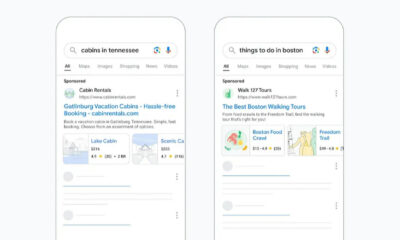SEO
Tips For Top-Performing Brand Awareness Campaigns On Facebook Ads
One of the most underrated aspects of social media marketing is our channel’s ability to make a difference in any part of the funnel.
As a whole, social media is a lot like a marketing multi-tool.
Think about it. We may not be the sharpest conversion “knife” in the drawer, especially compared to brand search.
But what we might lack in performance superiority, we more than make up for in our versatility.
We can offer various tools to get the marketing job done, regardless of the objective.
Now, I’ve spent the better part of my career as a social media performance marketer, and I’ll admit it’s still my default way of operating.
But there is an entire world outside of lead generation and traditional “CPC,” and it’s a world that can significantly impact the bottom funnel and the bottom line.
I’m talking about the top of the funnel.
“Brand awareness” campaigns, where the impression numbers are big, but measurable attribution can be small.
And it’s a world where performance marketers may feel a little uncomfortable due to the lack of tangible results.
But just because top-funnel campaigns don’t always drive leads and sales as efficiently or directly doesn’t mean they aren’t a vital part of any balanced digital marketing strategy.
In this article, we will go “up-funnel” and talk about how brand awareness campaigns work on Facebook, and how you can set them up for optimal results.
The Strategic Role Of Brand Awareness
Before we get into campaign details, it’s essential to understand the role of awareness in an overall marketing strategy.
For “full-funnel” marketers, this might be a bit of review, but it’s critical to understand how to make the most of these campaign types.
First, let’s nail the nomenclature.
These campaigns have different names and terms that I may use interchangeably in this article.
Brand awareness, brand, awareness, top-funnel, upper-funnel, and TOFU are just a few ways marketers refer to these campaigns.

In the easiest strategic terms, brand awareness campaigns aim to introduce your target audience to your brand.
This is accomplished by running introductory and memorable creative to a broad audience.
Think of the funnel stages the way you would dating.
You can run conversion campaigns exclusively.
But it’s the marketing equivalent of walking up to someone and asking them to go out with you – no introduction, no discussion, just right in for the sale.
Sure, that can work if you have “high-intent” customers/singles.
But your chances of successfully closing the deal are higher if you introduce yourself and break down some of those initial barriers.
Where conversion or lead generation campaigns at the bottom of the funnel aim to get people to take action, brand awareness campaigns are meant to introduce you, familiarize you, and get you to stick in the minds of your customers.
Seems pretty straightforward, right?
It is, but the measurement is less definitive than campaigns at the bottom of the funnel.
Measuring Brand Awareness Campaigns The Right Way
Measuring a sale or lead in digital marketing is pretty straightforward.
Brand awareness success lies in more “squishy” and less concrete KPIs.
Here are a few that you should keep an eye on as you’re evaluating success:
Impressions and Reach
This one is simple. We want to serve as many impressions and reach as many people as possible.
Frequency (Impressions/Reach)
We can’t always expect our audience to see or absorb our ad’s content on the first impression.
Sometimes it takes two, three, or 10.
Frequency refers to the average number of times a person in your audience has seen an ad over a given period. The higher, the better.
However, high frequencies could signal over-delivery and potential wear out.
CPM (Cost Per 1,000 Impressions)
If the goal of brand awareness is to get in front of your audience and stay there, we’d like to do this for the most efficient cost possible.
A low CPM is vital to maintain efficiency and maximize your ad’s “staying power.”
Video Engagement
If the creative you’re running in your upper-funnel campaign is video, you’ll have access to a host of specialty metrics that will help you better understand how your message is consumed.
We’ll cover these specifically for Facebook below.
Facebook & Upper Funnel Campaigns: Which Objective To Choose?
Facebook gives advertisers several options when executing awareness or upper-funnel campaigns on the platform. In fact, it can be a little confusing.
Not only are there a few campaign types that apply to what we’re trying to accomplish, but they might appear in a different “Consideration” section.
Without getting into a marketing philosophical debate, there is often some grey between awareness and consideration.
For our purposes, “Video Views” are included as an upper-funnel objective.


Generally speaking, you can’t go wrong with selecting either Brand Awareness, Reach, or Video Views as an objective for an upper-funnel campaign.
But there will be subtle differences between the three regarding which KPIs are prioritized.
As Facebook marketers know, the platform is very good at optimizing campaigns to get desired results.
Here are the differences:
| Objective | Description/Optimization | KPI |
| Reach | Shown to as many people within the audience as possible | CPM / Reach Volume |
| Brand Awareness | Shown to people within the audience most likely to recall the ad | Ad Recall Lift |
| Video Views | Shown to people most likely to watch/complete the video | Cost per View |
Reach
- Run this to show your ads to the widest audience, as cheaply as possible, as often as possible.
- Measure this by CPM and Impression, Reach Volume.
- Superpower: Unlike the other two upper-funnel objectives, you can set the average frequency goal for Reach campaigns
- Watch out for poor engagement and click metrics. These campaigns are designed to be cheap and broad, and you will not see the same amount of clicks or video views/completes as you would if you chose another objective.
Brand Awareness
- Run this to show your ads efficiently to people who are more likely to recall them.
- Measure this by CPM and Ad Recall Lift.
- Superpower: Brand Awareness is the only campaign objective that gives advertisers access to a unique metric called “Estimated ad recall lift (people).” It shows how many people Facebook estimates would remember your ad if asked within two days.
- Watch out for the Estimated ad recall lift metric and its translatability to other brand awareness metrics across different channels. This is a Facebook-specific metric and may not mean much outside the platform.
In addition to the specialized “Estimated ad recall lift (people)” metric, any Facebook campaign spending at least $30,000 or more over its duration is eligible for a Brand Survey Test.
This Brand Survey Test is available in the “Experiments” section of your ad account’s ads manager and allows you to ask up to two preset questions to help determine the brand lift of your ad campaign.
- Standard Ad Recall (Required) – Do you recall seeing an ad for [page] online or on a mobile device in the last two days?
- A Second, Optional Questions


Video Views
- Run this to maximize video engagement and drive the lowest cost per 3-second video view.
- Measure this by CPM and CPV.
- Superpower: Video View campaigns will optimize to video performance metrics, showing the ads to people more likely to watch them longer and more often.
- Watch out for CPMs. Video views tend to be more expensive to run (comparatively) than Reach or Brand Awareness. And if video completion or view counts are not as important to you as Impressions or Reach, you may want to opt for another option.
Facebook Video Performance Metrics
Regardless of whether you’ve chosen a Video View optimization, all campaigns with video have access to special video metrics. Facebook has a lot of them, but here are a few you should focus on.
ThruPlays
The number of times your video plays to completion, or for at least 15 seconds.
This is also the closest comparable metric to those used by other ad platforms like Google.
Cost Per ThruPlay
The average cost for each ThruPlay.
This metric is calculated as the total amount spent divided by the number of ThruPlays.
Video Plays at 100% (Completions)
The number of times your video played at 100% of its length, including plays that skipped to this point.
Video Average Play Time
The average amount of time a video was played, including any time spent replaying the video for a single impression.
Retargeting: Adding Value To Brand Awareness Campaigns
By raising your target audience’s awareness of your brand, you should improve their likelihood of converting further down the funnel.
That’s why identification of people within your audience influenced by your brand awareness campaign is important.
These potential hand raisers can be retargeted campaigns to move further down the conversion funnel.
Thankfully, Facebook’s wealth of behavioral retargeting options gives you plenty of ways to segment potential would-be customers.
You can learn more about these retargeting options in this article by Tim Jensen, but here are a few you should focus on.
Video Views
Create an audience of people who have watched a percentage of your campaign’s video. The longer they’ve viewed, the higher their intent could be.
Ad/Post Engagers
Create an audience of people who have interacted with your ads or posts within a given period. This engagement could signal their interest in learning more and moving down the funnel.
Website Visitors (With a Twist)
Create an audience of people who have visited your website within a given period.
More specifically, use the exact landing page URL with UTMs to make sure you’re matching 1:1 with the audience you targeted with your brand awareness campaign.
Conclusion
Brand awareness campaigns are critical to familiarizing your brand to your target audience.
Facebook offers many options for executing upper-funnel goals and providing value for full-funnel marketing campaigns.
Reach, brand awareness, and video views are the main campaign objectives you’ll want to use, but they optimize to different things.
Always remember:
- If you want cheap impressions and the ability to control frequency, go for reach.
- If you want to deliver to audiences Facebook believes more likely to remember you, choose brand awareness.
- If you want to maximize the amount and quality of your video engagement, pick video views.
More resources:
Featured Image: kenary820/Shutterstock
!function(f,b,e,v,n,t,s)
{if(f.fbq)return;n=f.fbq=function(){n.callMethod?
n.callMethod.apply(n,arguments):n.queue.push(arguments)};
if(!f._fbq)f._fbq=n;n.push=n;n.loaded=!0;n.version=’2.0′;
n.queue=[];t=b.createElement(e);t.async=!0;
t.src=v;s=b.getElementsByTagName(e)[0];
s.parentNode.insertBefore(t,s)}(window,document,’script’,
‘https://connect.facebook.net/en_US/fbevents.js’);
if( typeof sopp !== “undefined” && sopp === ‘yes’ ){
fbq(‘dataProcessingOptions’, [‘LDU’], 1, 1000);
}else{
fbq(‘dataProcessingOptions’, []);
}
fbq(‘init’, ‘1321385257908563’);
fbq(‘track’, ‘PageView’);
fbq(‘trackSingle’, ‘1321385257908563’, ‘ViewContent’, {
content_name: ‘facebook-brand-awareness-ads’,
content_category: ‘facebook paid-media-strategy ‘
});













You must be logged in to post a comment Login